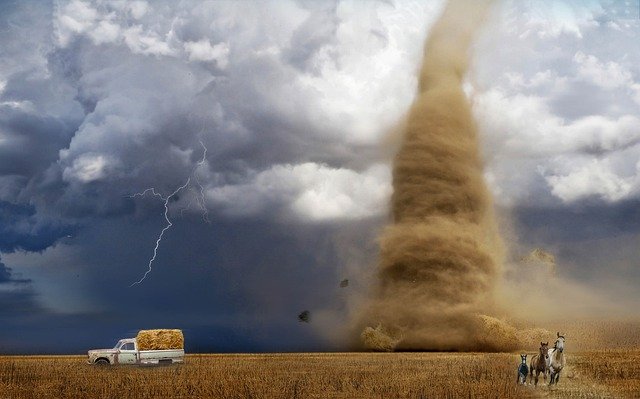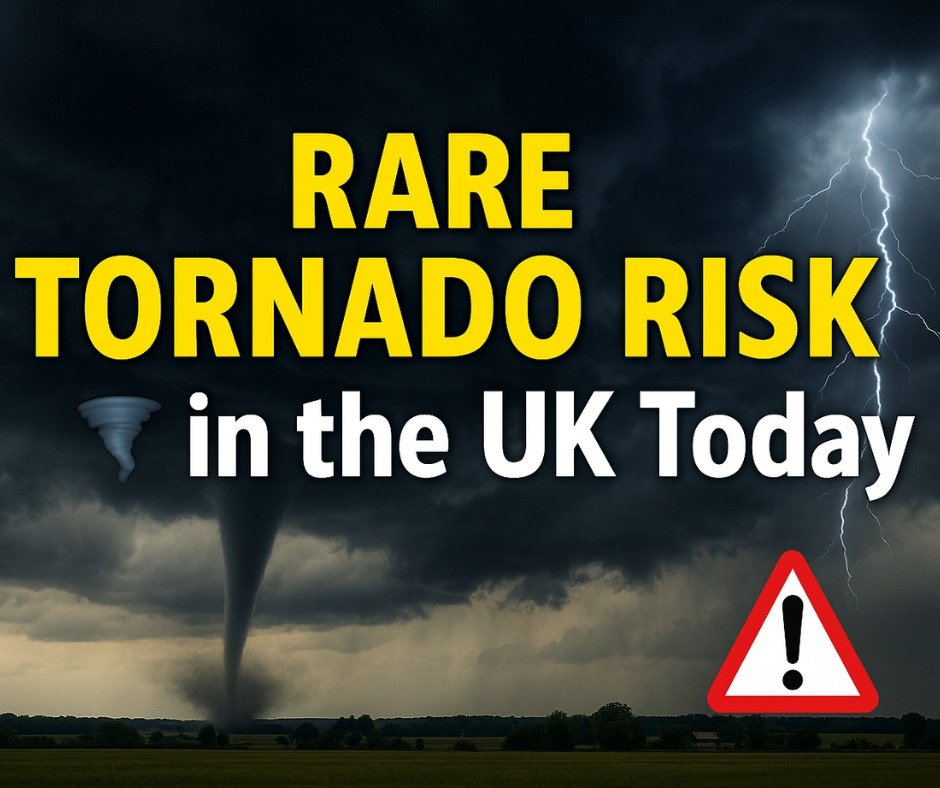When most people think of tornadoes, they picture dramatic scenes from the American Midwest, with vast twisters sweeping across open plains. Yet, far from being an exclusively American phenomenon, tornadoes are a regular—if usually less severe—occurrence across the United Kingdom. Recent events and statistics suggest that not only are British tornadoes more common than many might expect, but their frequency and impact have brought them increasingly into the public consciousness in 2025.
A Surge in Sightings: Tornadoes Make Headlines Across the UK
In July 2025, social media buzzed with striking footage as a tornado-like funnel cloud was spotted over West Yorkshire. Witnesses in Huddersfield and Marsden watched as swirling columns of air formed against a backdrop of intense summer storms. Local authorities and weather experts confirmed the sightings, which coincided with Met Office thunderstorm warnings for the region. Just weeks before, a moderate tornado touched down in Pulborough, West Sussex, carving a narrow path through trees, though fortunately causing little damage to homes.
Earlier in the year, in January, Storm Éowyn brought chaos to parts of Cornwall, where a tornado struck near Newquay. This storm uprooted trees, damaged roofs, and caused chaos for residents and holidaymakers at a caravan park, starkly highlighting how quickly these weather events can unfold and disrupt communities.
How Common Are Tornadoes in Britain?
Despite its reputation for mild, damp weather, the UK experiences about 30 reported tornadoes each year. England is particularly prone, with one of the highest tornado densities per land area globally. A University of Manchester study notes that England averages about 2.2 tornadoes per 10,000 square kilometres annually—higher even than the United States, when land area is considered.
Most British tornadoes are much weaker than their American counterparts, with wind speeds usually below 72mph. These typically fall into the T0 or T1 categories on the TORRO scale—a British system for classifying tornado intensity. They are often short-lived, sometimes going unnoticed except for brief, localised damage to trees, roofs, or outbuildings.
What Causes UK Tornadoes?
Tornadoes form from rapidly rotating columns of air beneath thunderstorm clouds—typically when winds at different altitudes blow in different directions or at different speeds. The UK’s climate, with its frequent Atlantic weather systems, provides ample opportunity for these ingredients to come together, especially during active weather fronts or thunderstorms. Notably, UK tornadoes are usually much narrower and less destructive than the supercell-driven twisters of the US “Tornado Alley”.
Met Office Monitoring and Expert Insights
Due to the unpredictable nature of tornadoes, the Met Office remains vigilant. In June, meteorologist Jonathan Vautrey warned of the potential for tornado activity during severe thunderstorms affecting northern England and southern Scotland. He stressed that while tornadoes require several ingredients to coincide, the possibility cannot be ruled out, especially under yellow weather warnings for storms.
Specialist groups like the Tornado and Storm Research Organisation (TORRO) work with the Met Office to investigate damage and verify reports across the UK. Their findings often reveal that these events, while “uncommon, are not rare,” and that coastal regions—particularly in southern England—tend to see a fair share of activity.

Extreme and Historic Tornado Events in the UK
While most UK tornadoes are mild, history records rare, devastating examples. The 2005 Birmingham tornado caused injuries to 39 people and led to £40million in damages along its path. Step back further to November 1981, and over 100 tornadoes were spawned by a single cold front moving across England and Wales, marking the largest tornado outbreak in Europe’s recorded history. In 1913, South Wales endured Britain’s deadliest tornado, which claimed five lives.
How Does 2025 Compare?
The trend in 2025 continues the pattern of frequent but mostly moderate tornadoes. However, the rise in dramatic footage, social media sharing, and extreme weather has heightened public awareness. So far this year, the UK has not experienced tornado fatalities, but the property damage and disruption have been notable, especially during the July thunderstorm period in West Yorkshire and Cornwall’s January tornado.
Staying Safe: Should We Worry?
Tornadoes in the UK are usually short-lived, localised events. Structural damage to homes is rare, and tragedies are uncommon. However, the unpredictable nature of these storms makes it crucial to heed Met Office warnings. Staying indoors during thunderstorms, avoiding travel, and keeping informed via trusted weather outlets are the best ways to stay safe.
The rise in tornado reports, paired with more volatile weather, underlines the importance of monitoring trends and being prepared, even for unexpected hazards.
Conclusion:
While the UK’s tornadoes are generally less severe than those in more tempest-prone parts of the world, they are proving to be a persistent and sometimes surprising feature of the British climate. Recent years have shown both an increase in reported sightings and a greater public interest, fuelled by striking footage and firsthand accounts shared widely across news and social media. Though most tornadoes in Britain cause only minor damage, incidents such as the ones witnessed in West Yorkshire, Cornwall, and other affected areas in 2025 highlight the need for vigilance.
With climate change bringing about more unpredictable and intense weather patterns, there is growing importance in understanding these localised but impactful storms. The role of the Met Office, TORRO, and other UK weather authorities remains crucial in supplying timely warnings and expert advice. As technology and forecasting improve, the hope is that communities across the country will be better equipped to stay safe and minimise disruption.
Ultimately, tornadoes are a reminder that Britain’s weather, though often changeable and mild, is never without its surprises. By staying informed and prepared, residents can confidently face these rare but noteworthy events—ensuring that, while dramatic, tornadoes remain more a curiosity than a crisis for most communities. Keeping an eye on official guidance and fostering a culture of resilience will be essential as the UK continues to adapt to an evolving climate.
Read More: Robbie Williams: UK Tour 2025 – The Showman Returns
